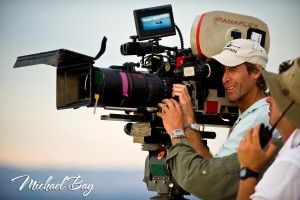
The first SciFund Challenge video training class starts next week and we are excited! Here’s our syllabus.
SciFund Challenge Class: Video Outreach 101 for Scientists
Course instructors: Elliot Lowndes, Jai Ranganathan, Anthony Salvagno
Course dates: November 2-December 13, 2014 (six weeks, with one week off for Thanksgiving)
This short course is intended for researchers that are new to science outreach through video, but are interested in getting started with it. The philosophy of this class is that three factors tend to keep scientists from doing video outreach: a lack of knowledge, a lack of experience, and a lack of a community that supports outreach. The purpose of this class is to do something about all three of these things.
In this class, we will be putting a focus on communication and community-building between class participants, emphasizing face to face communication (using tools like group video conferencing with Google Hangouts).
At the end of this class, class participants should have:
- An understanding of how to communicate their science in a manner that is compelling to a general audience.
- A basic comprehension of the key elements needed to make a short film, such as storyboarding, script writing, editing, and lighting.
- Some confidence to get started with video outreach.
- A completed short video (5 minutes at most) about their research.
There are five weeks in our short course and a specific plan for each week. At the beginning of each week, or shortly before, you’ll receive the plan and assignments for each week. Here is the overall plan for the class, week by week:
Week 1 (November 2-8): Crafting your message
We’ll work on the tricky challenge of how to create a compelling message out of the often-hard-to-explain research that we do. The focus of the week will be a technique called the Message Box. Developed by COMPASS and roadtested by hundreds of scientists, it is a proven method for shaping science messages. We’ll be working on these tasks both individually and in groups.
Week 2 (November 9-15): Script writing and storyboarding
This week will center on planning out our videos. How do we convert our science messages into compelling visual stories? This is where a planning tool known as storyboarding comes in, which we’ll use for our science videos.
Week 3 (November 16-22): Lighting and sound
How do we use lighting and sound to produce videos that people will actually want to watch? That’s the focus of the week and we’ll also start shooting scenes from our storyboards.
Thanksgiving Week (November 23-29): Off
Week 4 (November 30-December 6): Editing
This week will be all about editing our separate shots into a cohesive whole, using iMovie editing software. We’ll also touch on where to find images, sound, and video that you can legally use in our own videos.
Week 5 (December 7-13): Wrap-up, color correction, and sound effects
In the last week, we’ll make the final edits to our video. We’ll also talk about the basics of color correction and sound effects.



1 comment on “Syllabus for 2014 video training class”Add yours →
Comments are closed. You can not add new comments.